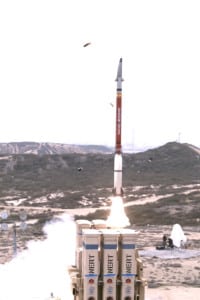
Israel’s David’s Sling air and missile defense system successfully intercepted a rocket for the first time outside a test, according to recent Israeli media reports. On May 10 the Times of Israel said unspecified military sources said the system intercepted a projectile during a rocket attack from the Gaza Strip aimed toward the Tel Aviv area. The primary contractor for David’s Sling is Rafael Advanced Defense Systems Ltd, but it is working with Raytheon Technologies [RTX]. The U.S. Defense Department…

 By
By 











